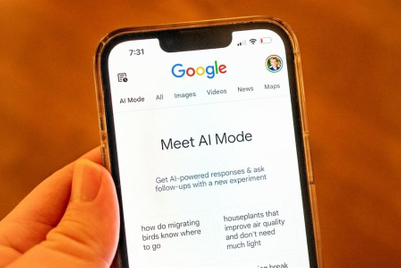
There’s an assumption within marketing that demand equals brand awareness plus time; that people eventually fall from the top of the funnel to the bottom through sheer force of gravity. But that’s not what happens in the crucial middle reaches of the buyer journey at all. It’s not how people experience brands and advertising.
Between long-term brand marketing and short-term performance marketing is a huge space that is often ignored. We call it the 'missing middle'.
Most buyer journeys don’t pass through well-labelled stations on an inevitable downward descent: starting with brand awareness before dutifully moving on to consideration of rational reasons for purchase, and then proceeding to a buy button. They reflect the way the human mind decides – and that’s far from a linear process. It notices, forgets, remembers again, doubles back, revisits, feels familiar, feels reassured. And then when the time comes to make a purchase, it makes what seems like the obvious choice without wondering how it became the obvious choice.
Your future buyer doesn’t know that a performance ad or a search ad isn’t supposed to have any long-term impact on their impressions of the brand. They don’t know that a purely awareness driving video ad isn’t designed to make them want to buy. They don’t know that a piece of thought leadership content or a case study isn’t supposed to generate an emotional reaction. Different touchpoints play different roles simultaneously. All are creative opportunities; all are capable of establishing brand memories and brand associations. All contribute to eventual decisions to buy.
Aligning brand with business planning
If brand marketing is to become a credible, accessible option for most marketing teams, it needs to be accountable in a way and on a timeframe that C-suite executives understand and appreciate. That’s not to say that it has to drive direct action and immediate sales and ROI – but we do need to get serious about finding ways to make it accountable in the short-term as well as the long.
Brand may do its best work over the long term, but it starts this work straight away – taking its place among other touchpoints buyers experience, influencing the impact of short-term marketing, and producing data signals that we can interrogate in order to understand and plan around this process.
Why it’s time to integrate purpose into the marketing model
And those are just the elements of the 'missing middle' that are being deployed and distributed by marketers themselves. The generation of millennials now entering positions of buying authority at work, the Gen Z members that will dominate consumer categories over the next few years: none of these groups make buying decision solely on the basis of unconscious memories formed by brand ads. They make decisions based on the interactions of those memories with what they consciously know about the brand.
If we’re to take control of the middle of the funnel, we can’t rely on investing at the top and the bottom and just hoping that everything connects up. We need to plan activity for the middle of the funnel, signpost and connect different experiences (brand-related, demand-related and purpose-related), and carefully analyse how they come together to generate action.
Mapping the 'missing middle'
The digital transformation of marketing that has grown in momentum over the last 18 months, provides us with more options than ever to map the 'missing middle'. We’re able to use share-of-search as a real-time indicator of awareness and mental availability, analyse search trends to understand the priorities of our audiences and the context in which the middle of the buyer journey takes place.
We can capture and segment signals of intent, analysing how they are influenced by previous engagement with brands – and how they go on to influence brand engagement in the future. We can benchmark the timeframes over which we can reasonably expect all of this to take place – and start to answer enduring questions about how and when different types of marketing activity drive return on investment (ROI).
Using digital marketing and search data, AI and analytics, marketers will be able to build detailed models of how exposure to brand ads influences engagement with other touchpoints, and the frequency of exposure and length of brand investments that are required to start driving these effects.
We can track how brand and demand touchpoints contribute to the overall customer experience. Brand may do its best work over the long term, but all advocates of brand marketing acknowledge that it has an impact in the short term too. The middle of the marketing funnel has been obscured for too long.
It’s time to bring the nature of that impact into focus and use it to generate meaningful indicators that give a sense of how the long-term picture will shape up.
Nick Seckold is a sales director at Microsoft Advertising



.jpg&h=334&w=500&q=100&v=20250320&c=1)


.png&h=334&w=500&q=100&v=20250320&c=1)





.png&h=334&w=500&q=100&v=20250320&c=1)







